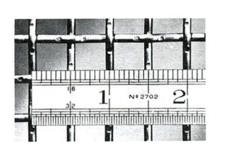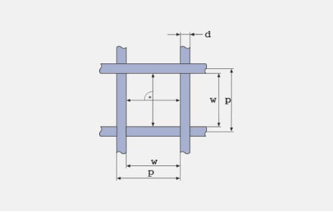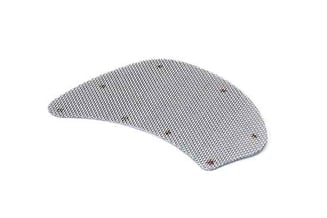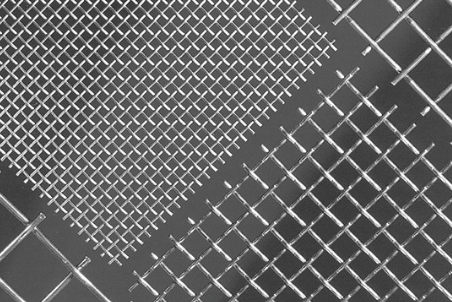How to Pick the Right Woven Wire Mesh (Mesh Count, Wire Diameter, and Micron Rating)
In the world of filtration, woven wire mesh is a vital asset for a wide range of uses. It provides desirable precision when filtering unwanted debris from the final product while offering the freedom needed to maintain a strong rate of flow.
But how do you determine what mesh specifications work best for your process? What are the deciding factors?
With 150 years of woven wire experience, W.S. Tyler is here to help. We understand that there are three primary factors that come into play when finding the best option. These factors are mesh count, wire diameter, and micron rating.
This article will go over just that, defining each factor, explaining why you should understand the best specifications for your operation, and the possible risks you face if you don’t take any one into consideration.
What Is Mesh Count?

Woven wire mesh is generally described by its mesh count. The mesh count is defined as the number of openings in a linear inch.
When you hear terminologies such as 16, 100, or 300 mesh, this is referring to the amount of openings per inch. So if you have a 100 mesh weave, an inch contains 100 openings in any given direction. This means a 16 mesh weave is much finer than a 100 mesh weave. The photo on the left is an example of a 2 mesh.
Why is Mesh Count Important?
The list of applications in which woven wire can be used is virtually endless. For example, oil rigs use mesh to filter out sand and other unwanted debris when pulling raw oil from the ocean floor. Another popular use for woven mesh is the transferring of ink onto a substrate when screen printing.
While these are two completely different applications, they both rely on the openings of the weave.
As the mesh count corresponds with the number of openings in the weave, knowing what mesh count you need will allow you to ensure you are selecting a solution that allows you to have control of what’s passing through.
So, if you work in the oil industry and are looking to filter sand out of oil, you need to use a mesh count that will block out the sand particles while allowing the oil to flow at an efficient rate. This will probably be around 100 or below, depending on the size of the particles being filtered.
But what happens when you implement the wrong mesh count?
Well, using a mesh count that is too large for your process can result in unwanted debris making its way into the final material/product. At the same time, using a mesh count that is too small can prevent desired particles from passing through, hindering the flow rate of your process and resulting in pressure buildup.
We will cover this further in a little bit.
What Is Wire Diameter?
While mesh count refers to the number of openings in the weave, wire diameter refers to the width of the individual wires. The diameter of the wires determines how much open space there is between the wires and plays an integral role in the strength of the weave.

It is commonly thought that if a roll is 16 mesh, for example, that the size of its pores is 1/16 of an inch. This is not the case as the wires fill a portion of the opening, which directly affects pore size.
To put it simply, if the wires in the weave are thicker, there will be a smaller amount of space between the wires; however, the weave will be stronger and able to endure harsher conditions. If the wires in the weave are thinner, there will be a larger amount of space between the wires; however, the weave will be weaker and the weave will be prone to wear.
Discover how wire mesh suppliers achieve accurate wire diameters in the article below:
Why is the Wire Diameter Important?
There are numerous applications that subject the mesh to harsh conditions, whether it's high temperatures or filtering out course material. In such cases, you are going to want the strongest weave possible.
Knowing the wire diameter will allow you to determine the right specifications that will allow you to get the results you want while preserving the lifespan of your mesh.
Naturally, the thicker the wire in the weave, the stronger it is. However, you don’t want a wire that’s too thick for your particular needs.
Let’s say you are working with coarse aggregates. If you use a wire diameter that’s too thin, you run the risk of destroying your mesh, putting your other equipment at risk.

Now, let's say you switch gears and begin working with fine sand. Using a wire diameter that’s too thick may make the openings too small and directly affect the micron rating, which we’ll explain next.
What Is Micron Rating?
While mesh count is the amount of openings and wire diameter is the width of each wire, micron rating is most easily explained as the exact distance between the wires in the weave. In other words, the micron rating is a direct reflection of how much of the opening space is not filled by the diameter of the individual wires.
To provide some perspective on how a micron relates to a more common unit of measurement, one micron is 1/1000 of a millimeter.
Why Do I Need To Know The Micron Rating?
One of the more popular applications of woven wire mesh is filtration. Whether you’re filtering out sand during the fracking process or debris when recycling plastic, you need to be aware of two things: the opening count and opening size needed for your filtration process. 
Once both of these factors are determined, you can then pinpoint what micron rating you need.
Knowing the proper micron rating will allow you to have more control over the flow rate of what’s being filtered. That being said, failure to use the correct micron rating can lead to blinding, which occurs when particles get stuck in the weave openings and hinder the flow rate.
This, of course, is heavily dependent on what your filtering and the amount of waste buildup the mesh will be subjected to.
So, to sum it up, using the correct micron rating will ensure impurities get filtered out while maintaining sufficient flow. This will promote an operation that is both energy-efficient and cost-effective.
Mesh count and micron rating sometimes get confused when discussing woven wire mesh. Learn how the two specifications compare in the following article:
Gain A Better Understanding Of Woven Wire Mesh
Mesh count, wire diameter, and micron rating are all wire mesh specifications that must be discussed when designing a wire mesh solution, whether it be a roll or a fabricated part. Having a good understanding of what specifications are right for you will allow you to have complete control over the particle size range that passes through the mesh as well as the flow rate throughout your system.
Now, to ensure you implement a wire mesh solution that helps drive revenue, you must understand the jargon that surrounds the product. This will help prepare you for the conversations you will have with wire mesh suppliers, putting you in a better position to make the right decisions.
With over 150 years of experience helping customers across countless industries leverage the capabilities of woven wire mesh, W.S. Tyler strives to help educate those in the screening/filtering world understand how the versatile material can help innovate their process.
To gain insight into the key terms used within the wire mesh industry, read the following article:
About Ronnie Brown
Ronnie is the Content Writer for W.S. Tyler and has four years of experience as a professional writer. He strives to expand his knowledge on all things particle analysis and woven wire mesh to leverage his exceptional writing and graphic design skills, creating a one-of-a-kind experience for customers.




